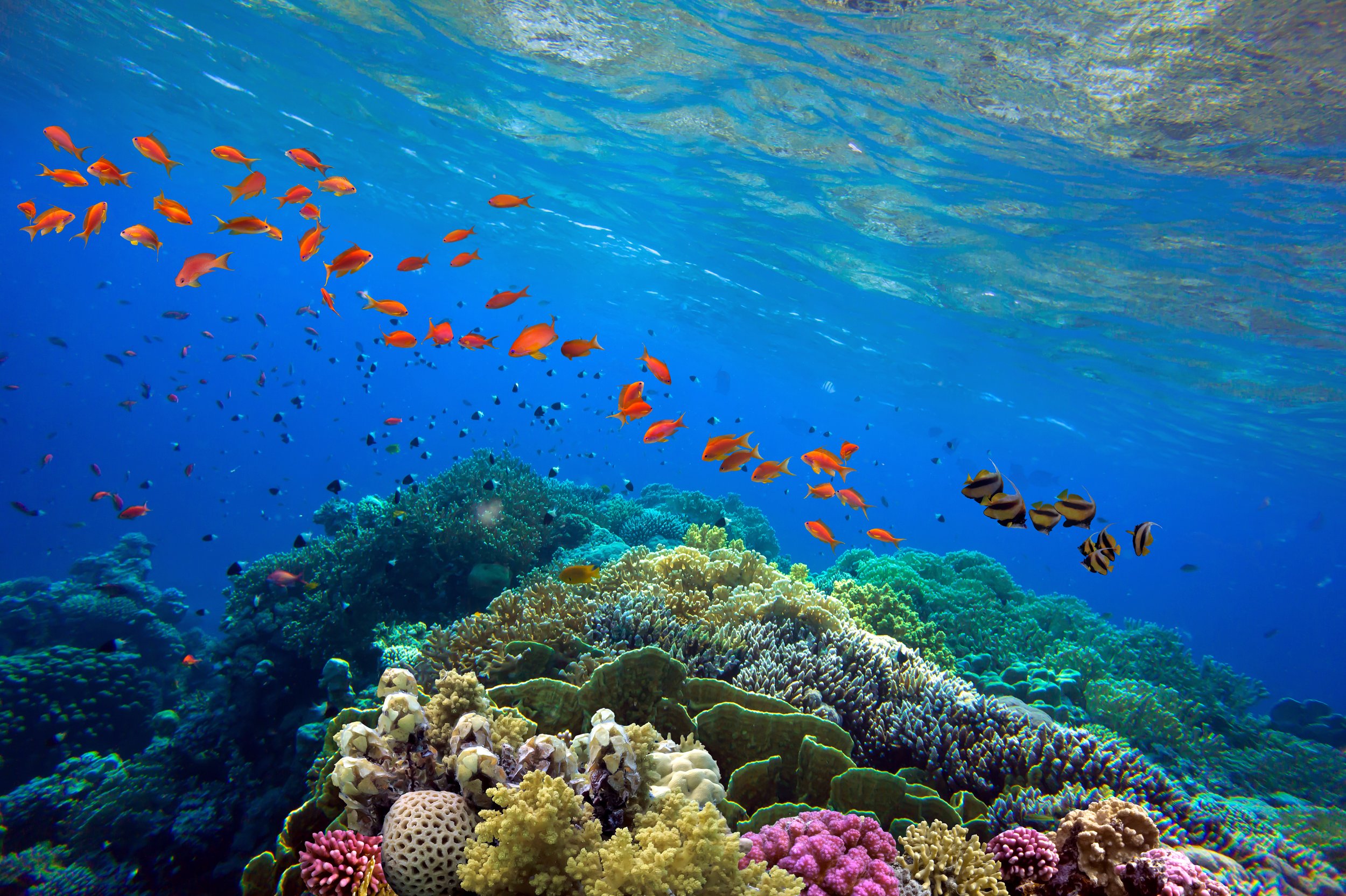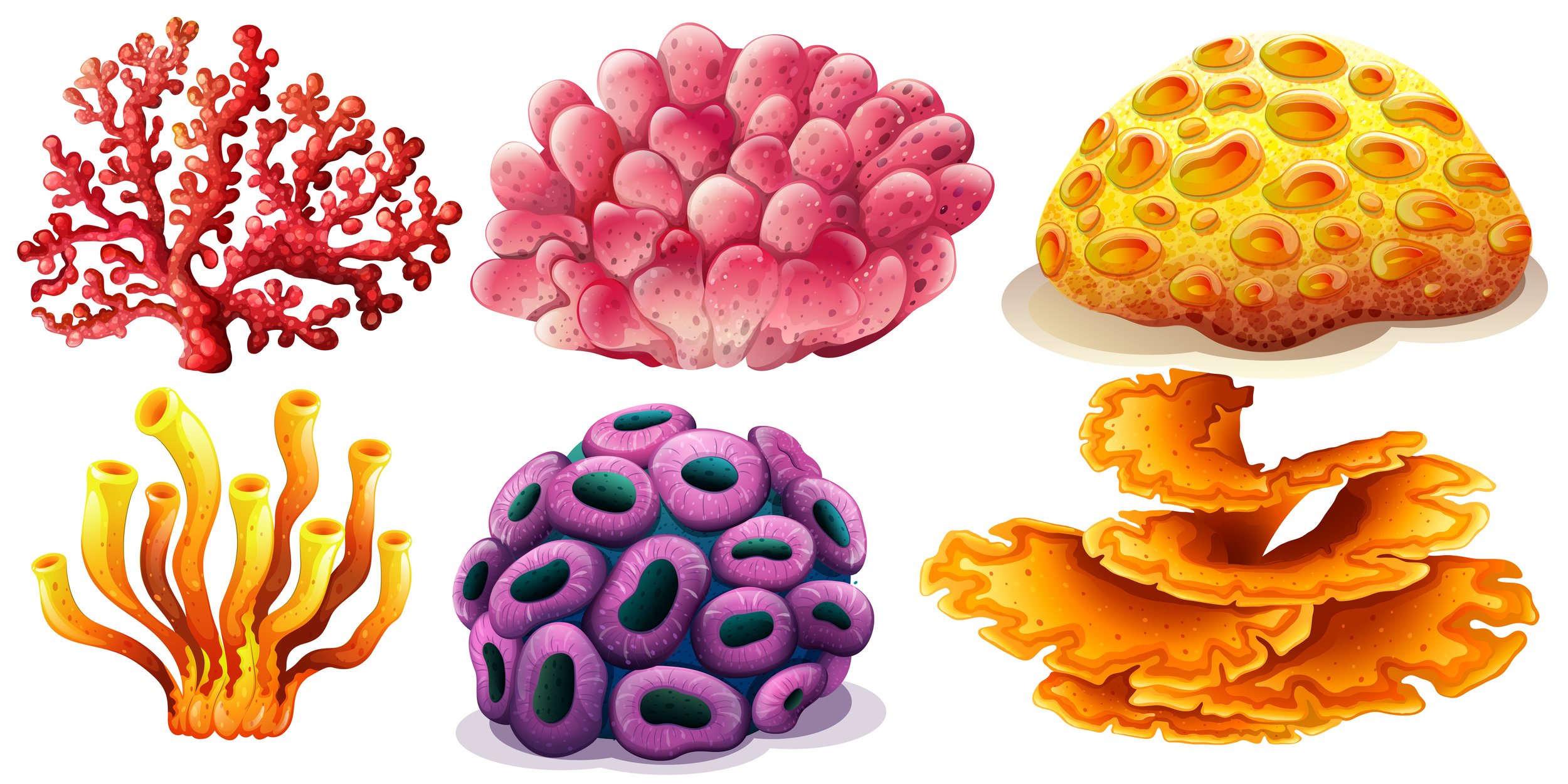The Magical World of Coral Reefs
Are corals animals, rocks, or… mushrooms? Try to guess before you keep reading—this curious article is full of surprises, we promise!
Corals are living organisms related to jellyfish. Although they might look like mushroomy plants, they are tiny, tube-shaped individual animals called coral polyps. They usually live together, forming beautiful coral reefs. Corals eat smaller animals and plants that float around in the waters called plankton and algae. Just like the food they eat, corals can be green, red, orange, blue, purple, or even pink! They have different bodies too—some of the coral polyps are hard like brain coral and Elkhorn coral, while other corals like sea fans and carnation coral are soft.
Corals prefer living in clear, shallow, tropical waters around the world, usually close to the surface. And they are usually found near areas with waves. Waves are pretty helpful for them, as they move the waters and help deliver food, nutrients, and oxygen to support the corals.
But corals are not just magically looking and extremely pretty! They play a very important role in our oceans.
By living together, corals build up whole ecosystems called coral reefs. An ecosystem is an environment where plants and animals live together, benefit from each other, and interact. Imagine something like a big, colorful neighborhood! Even though a coral reef can be made up of thousands of coral polyps, it occupies a small area. It is like having to share a room with thousands of siblings!
Various types of marine animals and plants can be found in areas with coral reefs. In fact, 25% of all ocean life happens in coral reefs and depends on them for survival.
Coral reefs need a long time to grow and form a big community underwater, which explains why they are one of the world’s oldest living ecosystems. Most of the coral reefs today were formed after the last ice age, which was 100,000 years ago! What happened back then is that the melting ice caused the sea levels to rise and the waters got high enough that they flooded the coastal areas and edges of our continents and islands. As a result, coral reef ecosystems were created near beaches.
Nowadays, coral reefs can be found mainly in Indonesia, Australia, the Philippines, Papua New Guinea, French Polynesia, Fiji, the Maldives, Hawaii, Bahamas, Egypt, and the Solomon Islands.
As the oceans absorb up to 50% of the carbon emissions that people create and send into the atmosphere, the bad ingredients of those emissions end up in the world’s waters and impact the well-being of corals.
It’s important to protect corals, as they play a key role in the healthy, balanced life of marine animals and plants. That’s why Kvaroy Arctic supports the Bahamian coral farm Coral Vita, which takes care of coral’s growth on land to replant in the oceans and gives new life to dying ecosystems. Its methods grow coral up to 50 times faster than traditional methods and improve corals' strength and resilience.
Corals’ health is very important for the Earth’s overall health. When the new global prize called The Earth Shot Prize was created in 2021, they immediately noticed Coral Vita’s contributions to healing the corals. As The Earth Shot Prize aims to find and recognize meaningful and impactful environmental efforts from around the world, it shows how truly valuable the existence of coral ecosystems are for all life on our planet.




